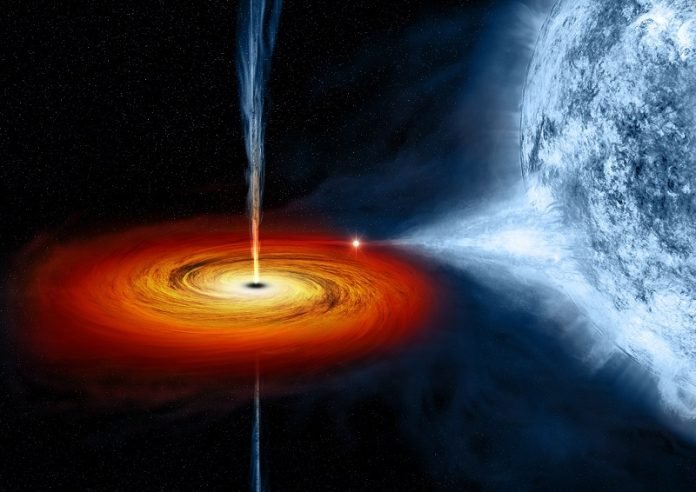
The physics surrounding black holes is just plain weird. A gravitational well so strong that not even light can escape can do some pretty strange things to normal matter.
Over the decades, plenty of theories have been put forward about what those strange things might be.
And now, a new paper from physicists at the University of Oxford has proved that, once again, Einstein’s theory of gravity was right.
Their work focused on a “plunging region” immediately outside the black hole’s radius. In this region, matter “plunges” straight into the black hole rather than orbiting it via the more familiar laws of orbital mechanics.
One of the paper’s authors, Dr. Andrew Mummery, equates it to watching a river turn into a waterfall. Matter flows nicely along a well-defined path and then seemingly drops off a cliff.
Theoretical work has been ongoing for this region for decades. The idea of the plunge came originally from Einstein’s theory of gravity.
It noted that sufficiently close to a black hole, the matter would be forced into the black hole at close to the speed of light. However, no one had yet collected any data and proved this theory.
However, data from NASA’s Nuclear Spectroscopic Telescope Array (NuSTAR) and Neutron star Interior Composition Explorer (NICER) change that.
They collected X-ray data on a relatively small black hole located in a star system about 10,000 light years away. That data showed that matter (which is all plasma at that point) rapidly moves toward the interior of the black hole once it reaches a certain threshold.
This discovery is only the first step in a long-term plan, where researchers hope to use a much bigger telescope to study much larger black holes. The Africa Millimetre Telescope is a proposed new ground-based telescope planned to begin operations in Namibia. Originally proposed back in 2016, the project is slowly moving toward first light and has so far received 10 million Euros in funding.
With this new telescope, the Oxford physicists hope to glimpse one of the supermassive black holes in the center of our galaxy.
They could potentially even capture a video of it rotating—or at least the matter around it rotating. That would be a first for black hole astronomy and a major technical feat in and of itself.
For now, plenty of other smaller black holes can be analyzed using data from existing telescopes, such as NuSTAR and NICER, as well as other platforms. The paper also analyzed data from the International Space Station.
With new tools and a better understanding of what to look for, there are undoubtedly more discoveries waiting to be made about black holes in the data we’ve already collected.
Written by Andy Tomaswick/Universe Today.



